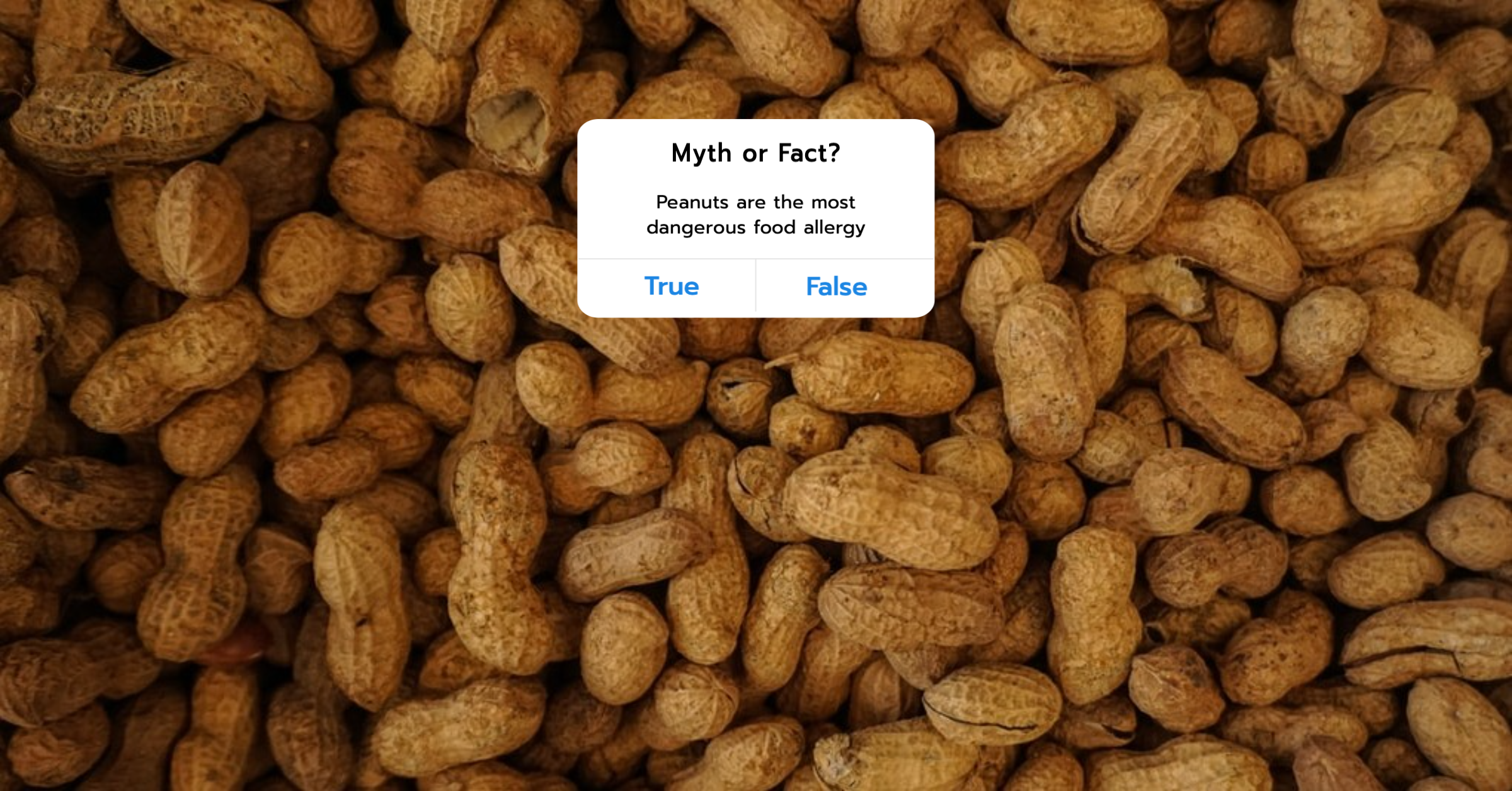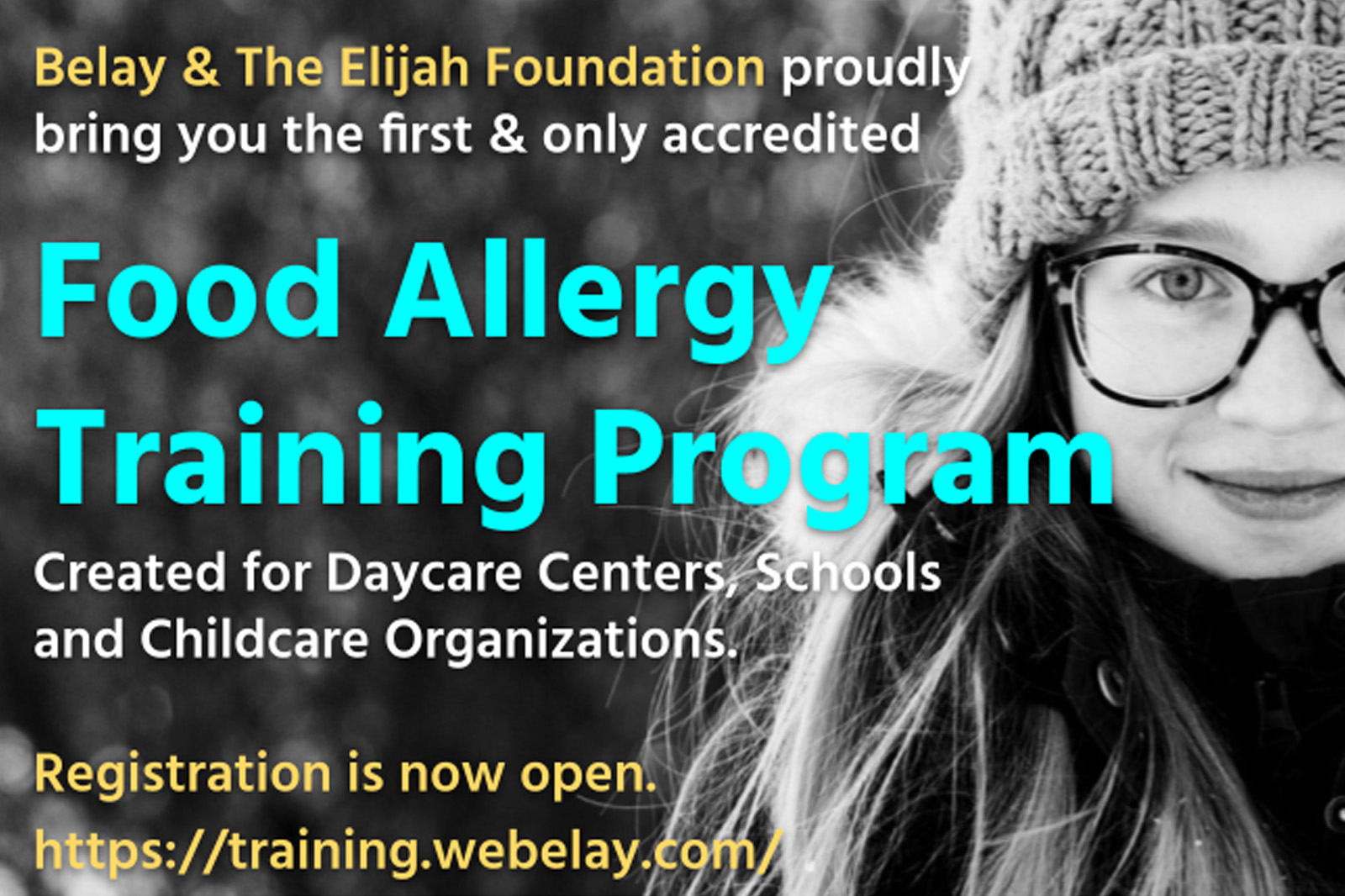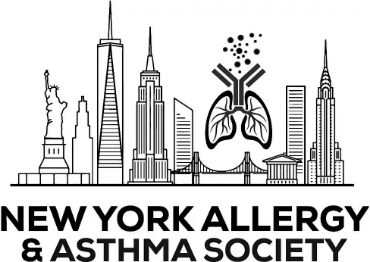Belay is a community where we can discuss our children’s food allergies. Every challenge and success is an opportunity for all of us to learn and find comfort through each other. We also realize it can be difficult to have these conversations outside of the community, with misinformation about food allergies a common obstacle. Discussing your child’s food allergy, signs of anaphylaxis, and Epipen use are important topics, so make sure everyone you’re talking to understands the truth and reality of your child’s food allergies for a larger, safer community.
We’ve compiled five common food allergy myths and debunked them so you can spread the right information and make every conversation about your child’s food allergy a positive, informative one.
You may know the information here, or you may learn something new – regardless of what you take away, this is a great resource to share with others about food allergies.
MYTH: Peanuts are the most dangerous food allergy.
FACT: Let’s get to the point: An allergic reaction to ANY food can range from mild to severe. For a long time, and maybe still today, peanuts have gotten the most attention, likely because they account for a large portion of food allergies among children, but we now know, and recognize the fact, that we can be allergic to any food. Other common food allergens include those listed in the Top Nine – milk, eggs, peanut, tree nuts, soy, wheat, fish, shellfish and sesame – but the truth is, we can develop an allergy any food, and that comes with the potential for a severe allergic reaction. Takeaway: all food allergies need to be taken seriously.
MYTH: Only children develop food allergies & they can outgrow them over time.
FACT: You can actually develop a food allergy at any age! Adult-onset food allergies are on the rise. One in 10 adults in the United States have a food allergy – that’s 26 million – and about half of them developed the allergy in adulthood.
It’s also true that children can outgrow their food allergies, but it’s more common with some food allergies such as eggs and dairy than it is for foods like tree nuts and peanuts. Don’t wait to learn more – consult your family doctor to understand your child’s food allergy now and as they grow.
MYTH: A food allergen will always be listed with ingredients on food packaging.
FACT: In both Canada and the United States there are food allergen labelling guidelines to ensure that consumers are made aware of what is in packaged food. Each country handles these labelling outlines differently, with Canada recognizing different “priority allergens” and the United States’ identifying “eight major food allergens”. Read about the guidelines for each country below to know what you should be looking for on your next grocery trip, but remember to ALWAYS read labels and ingredients lists so your child can confidently enjoy their food.
Read more about Canada’s food labelling guidelines.
Read more about the United States’ food labelling guidelines.
MYTH: Your child doesn’t need to go to the hospital after being treated with an epinephrine auto-injector.
FACT: The short answer? Visit the hospital every time your child has an anaphylactic reaction. Anaphylaxis is a serious, life-threatening condition that should be treated extremely seriously. Epinephrine is spectacular at stopping the anaphylactic cascade and your child’s symptoms will likely subside immediately with epinephrine but there is always a chance of a Biphasic reaction, which occurs when the epinephrine wears off and the anaphylactic cascade returns.
One more time: Don’t hesitate to give epinephrine and always go to the hospital following the injection to ensure your child is safe and healthy.
MYTH: Food allergies and food intolerances are the same thing.
FACT: Let’s set the record straight: They are not the same and there are significant differences between food allergies and food intolerances, and it’s important to understand what your child has so you can react and plan appropriately.
Food allergies are caused by a reaction to a particular food protein and if ingested, can effect multiple organs and your immune system, potentially leading to anaphylaxis. Food intolerances, on the other hand, cause digestive discomfort and can lead to illness, but do not involve the immune system. There is still the possibility of an intense and uncomfortable reaction, but typically not anaphylactic. It’s crucial to know which diagnosis your child has so you can make purposeful choices for them, their diet and their health.











